Jack Murtagh contributed to the writing of this post.
Today we went to Moqattam, an area on the outskirts of Cairo named for the small mountain it features. The suburb is primarily Christian (Christians make up 10% of Egypt’s population) and the mountain has several biblical portraits and verses carved in its perpendicular face.
We went to a church near its peak that boasts being the largest church in the Middle East. More spectacular than its size, though, is its construction: known as the “cavern church,” it’s built inside the mountain. You enter it from above like a cave and it opens to an enormous amphitheater surrounded by carvings and fun uses of stone like a pillar that’s also a cross and craggy rocks that spell out “faith” when you look at them the right way.
Last time I was here, a historian friend told me about the rather curious relationship between Christians and Muslims in this area. He’d seen Muslims come to the church and pray for protection from its patron saint. Both groups hold parades for their respective saints and it’s not uncommon for them to attend each others’. We went on a tour of Coptic (i.e. Christian) Cairo yesterday and saw a church built in a heavily Islamic architectural style, complete with Arabic script painted on its front facade – you could have mistaken it for a mosque if you missed the little crosses. Meanwhile, both the churches and mosques have been built or renovated using carved pillars and other remnants from ancient Egyptian, Greek, and Roman temples, literally built atop pagan relics. With how divisive religion can be, especially in an area like this where the religio-political tensions are high and the people are very devout, I love these reminders of the unclean boundaries between them and how knotted up we all really are.
The real reason we went to Moqattam was not to see the church at the top of the mountain but the community that fittingly lives at its foot. They are known among Cairenes as the “Zabbaleen” or “garbage people.” It’s not meant as a slur but as a description of their profession. Cairo has no official garbage retrieval system. Instead, the Zabbaleen go into the city and walk door to door collecting people’s trash for a few Egyptian pounds. They then take the trash back home and sort it by hand, recycling the recyclables, feeding organic waste to their pigs (which they then sell to hotels to serve to tourists), and making crafts or selling whatever they can of what remains.
And as a result, they live among garbage. It’s all over the streets and apartments and even on the roofs. The women are sitting in it to sort, the kids are playing in it, the men are hauling huge bags of it on their backs. These aren’t people who scavenge a landfill or work at a dump. They are professional trash sorters and their setup is work-from-home. It’s mind-blowing to witness. It’s also the most efficient recycling system in the world because they go through everything by hand. Most industrial plants are able to recycle 25% of the trash they process. The Zabbaleen recycle 80-90%.
The living conditions are atrocious and super sad, but they are surprisingly not the poorest people in Cairo and we’re told they’re proud of the essential role they play. It’s one of the more stable jobs and many own property. If you’re interested in learning more about the Zabbaleen, this is a great article about them.
We walked their streets for a while and took pictures discreetly because we didn’t want to offend. They were less discrete with their curious laser-focused stares at Jack. Kids ran up to him to practice all the English they knew (“hellohowareyouwhatisyournamewelcometoEgypt”) and some even asked for pictures. They aren’t very familiar with western tourists.
As usual, see the Photos tab for more recently uploaded pictures!





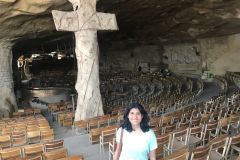
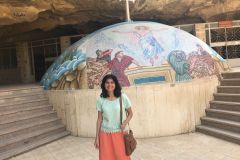

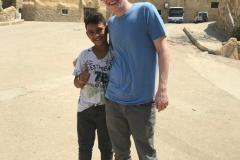
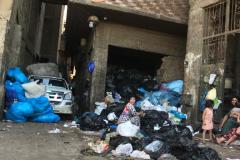
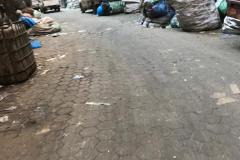
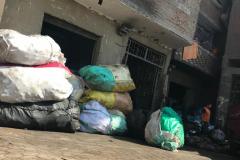
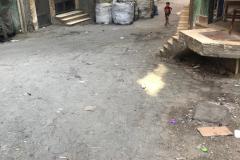
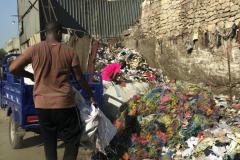
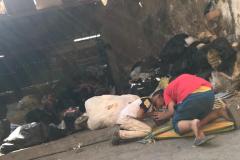
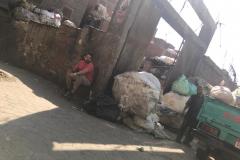
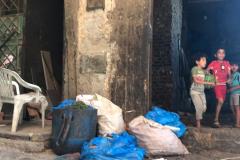

That was a nice write-up, Mano.
Wow! what a unique experience, and well captured with proper context, I wonder what inspired you to visit Moqattam and how did you learn about such place, as i doubt that it would be listed in the tourist directory. Great pictures, very well captured.
Thanks Dad! You’re right, it’s not a typical tourist destination. A friend of mine who lived in the area brought me to it the last time I was here.
Love the work from home observation. Seems like a resourceful and enterprising bunch. Are you born into it or can anyone become a zabaleen? — What’s the singular for garbage person? Enjoying these report outs more and more, thanks for sharing your adventures with us!
The singular is Zabaal. Though they actually prefer to go by Zaraeeb instead of Zabbaleen, the latter (“garbage people”) is a name that was imposed on them from the outside and conflates the people with the profession.
Loved this post, definitely learned something new!
That is a really unique experience. Did it smell bad? Any sense of what the majority of the garbage was? I imagine there’s not too much food waste. Thanks for the learning.
We definitely saw some wires and plastics but mostly things were packed up into bales and it was hard to tell. I’ve heard the food waste is processed by feeding it to pigs. There were a few rancid smells but it wasn’t as consistently smelly as you’d expect.